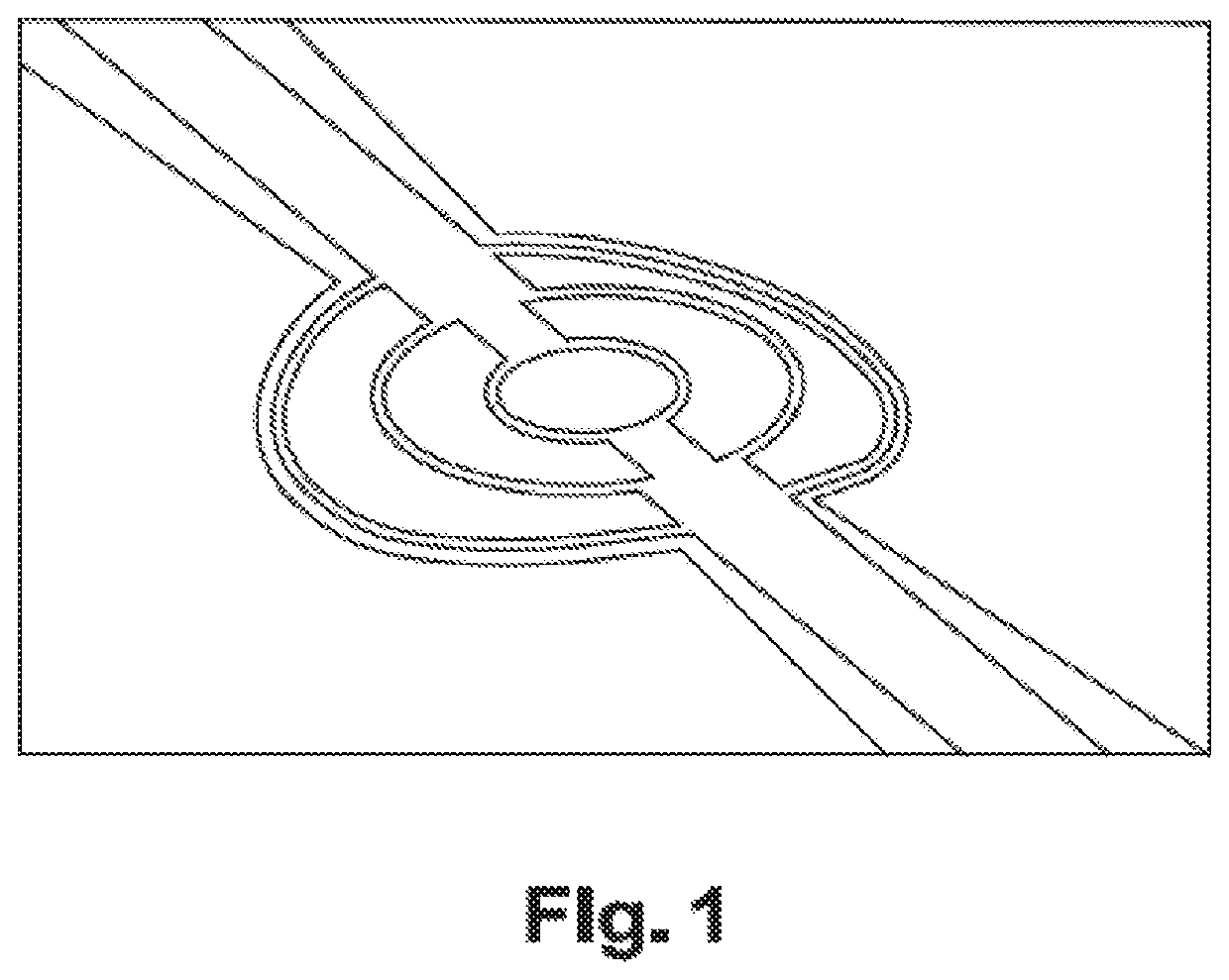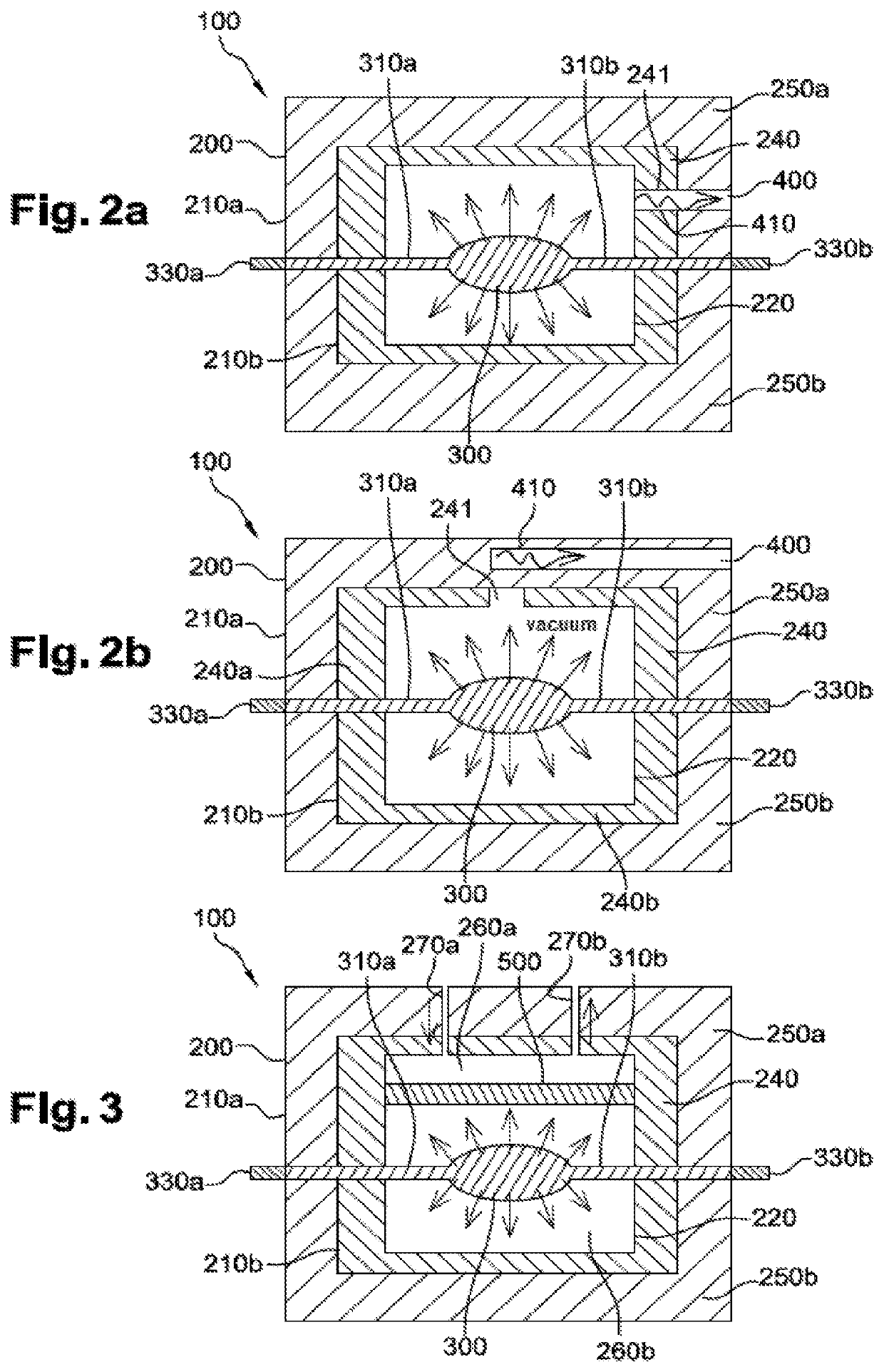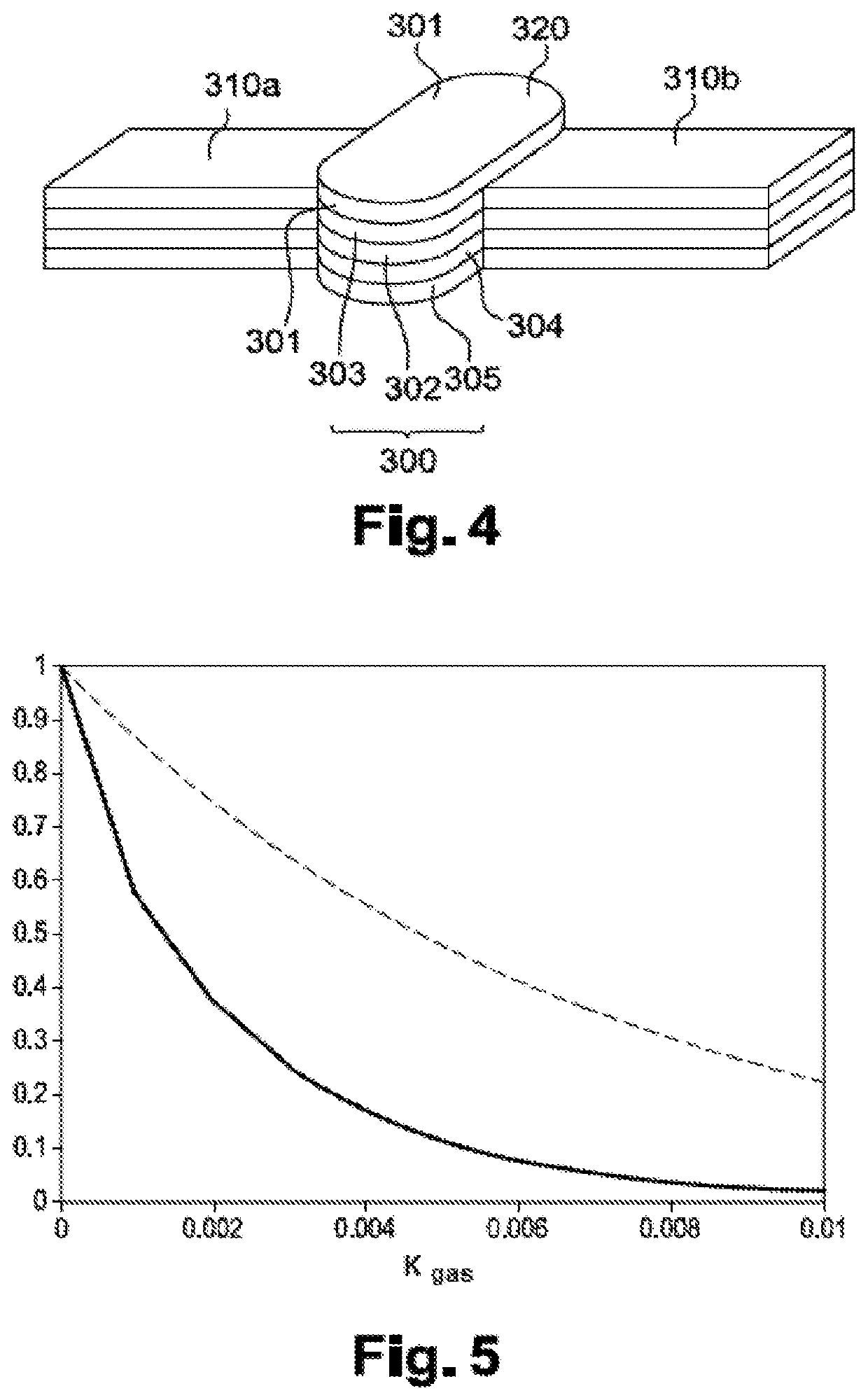Infrared device
a technology of infrared device and infrared source, which is applied in the direction of ohmic-resistance heating device, microstructural device, microstructure technology, etc., can solve the problems of limited infrared source operation temperature, limited efficiency of infrared source, and still unsatisfactory arrangemen
- Summary
- Abstract
- Description
- Claims
- Application Information
AI Technical Summary
Benefits of technology
Problems solved by technology
Method used
Image
Examples
first embodiment
[0084] the infrared device can comprise a waveguide 400.
[0085]By “waveguide”, it is meant a channel adapted to guide a light radiation in the extension direction of said channel.
[0086]Moreover, according to this embodiment, the reflective coating 240 comprises a through opening 241, and is arranged such that only the infrared radiation, likely to be emitted by the resistive element 300, and passing through the through opening 241 diffuses out of the cavity 220.
[0087]The waveguide 400, for the purposes of the present invention, is thereby coupled along its first end 410 to the cavity 220 at the through opening 241, such that an infrared radiation diffusing out of the cavity is at least partly guided by the waveguide.
[0088]It is clear, without needing to specify it, that the waveguide is disposed out of the cavity.
[0089]Advantageously, the waveguide can comprise a core made of an SiGe alloy.
[0090]According to a first alternative of the first embodiment illustrated in FIG. 2a, the firs...
second embodiment
[0122]The implementation of the reflective coating for the purposes of the present invention enables multiple reflections for the infrared radiation to be considered, and thus the probability of absorbing said infrared radiation by the gas to be increased. The temperature variations thus observed at the resistive element 300 are thereby intensified, such that the infrared device can make up a gas detector with an improved sensitivity with respect to the same detector without a reflective coating.
[0123]In particular, the temperature variations of the resistive element 300 can be detected via the measurement of the current flowing (for example with an amperemeter) in said resistive element as a function of the electric voltage imposed thereto.
[0124]The gas can thus be detected by an abrupt cooling of the resistive element 300.
[0125]By way of example, the inventors have determined by numerical simulation the reflective coating effect on the sensitivity of a gas detector according to t...
PUM
| Property | Measurement | Unit |
|---|---|---|
| reflectivity coefficient | aaaaa | aaaaa |
| pressure | aaaaa | aaaaa |
| reflectivity coefficient | aaaaa | aaaaa |
Abstract
Description
Claims
Application Information
 Login to View More
Login to View More - R&D
- Intellectual Property
- Life Sciences
- Materials
- Tech Scout
- Unparalleled Data Quality
- Higher Quality Content
- 60% Fewer Hallucinations
Browse by: Latest US Patents, China's latest patents, Technical Efficacy Thesaurus, Application Domain, Technology Topic, Popular Technical Reports.
© 2025 PatSnap. All rights reserved.Legal|Privacy policy|Modern Slavery Act Transparency Statement|Sitemap|About US| Contact US: help@patsnap.com



